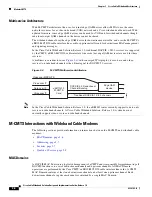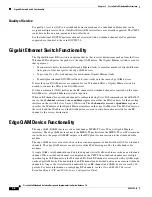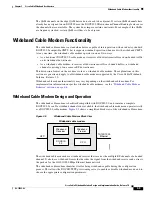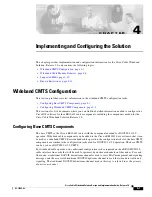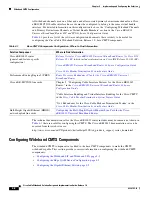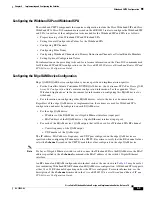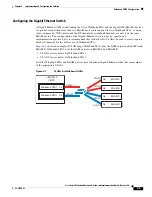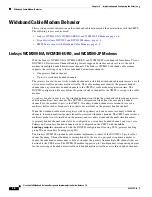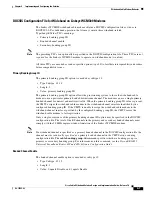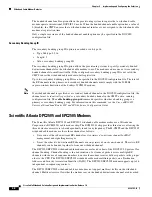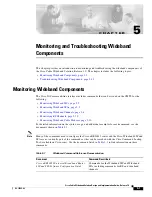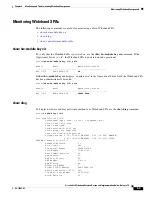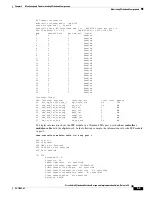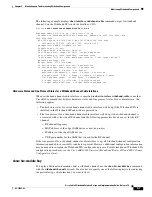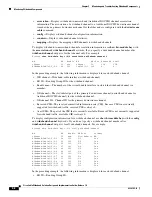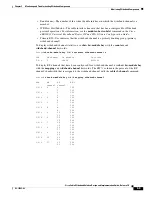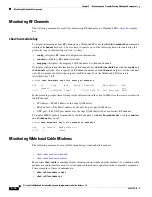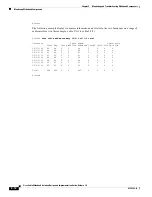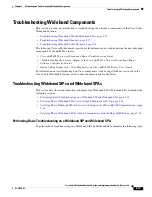
4-10
Cisco Cable Wideband Solution Design and Implementation Guide, Release 1.0
OL-10705-02
Chapter 4 Implementing and Configuring the Solution
Supported MIBs
Consistent with DOCSIS 3.0, the assignment of multiple channels takes place at two layers. The lower
layer is that of physical receiver configuration, or the Receive Channel Set, of the cable modem. The
CMTS uses a specific subset of DOCSIS 3.0 Receive Channel Configuration (RCC) encodings to tell the
wideband cable modem what center frequencies to use for its primary downstream channel receiver and
its non-primary downstream channel receivers.
With the wideband cable modem as per DOCSIS 3.0, bonding and sequencing of traffic can take place
across all channels of a cable modem's Receive Channel Set, or across any subset of these channels. A
second, higher layer of channel assignment deals with bonding and resequencing. This higher layer is
handled by assignment of a Downstream Service Identifier (DSID) for each independent sequence
number space. In the REG-RSP message, the CMTS uses a subset of DOCSIS 3.0 DSID encodings to
tell the cable modem the DSID values to recognize and the channels and resequencing timeouts that are
associated with each DSID.
Load Balancing for Wideband Cable Modems
If multiple wideband channels are available on the same fiber node, and the wideband cable modem
comes online with one of the wideband channels, the CMTS has the choice of assigning it to a different
wideband channel. In this case, a simple random load balancing algorithm distributes the cable modems
on the fiber node across the multiple wideband channels.
If the CMTS has a choice between a wideband channel consisting of one RF channel and another channel
consisting of two RF channels, the CMTS uses a weighted random load-balancing algorithm to
determine the wideband channel that the wideband cable modem will use. The wideband channel with
two RF channels is weighted so that it has two-thirds of a chance of being chosen while the wideband
channel with one RF channel has one-third of a chance.
Supported MIBs
The following MIBs are supported in Cisco IOS Release 12.3(21)BC and later for the Cisco uBR10012
router and the Cisco Wideband SIP and Wideband SPA:
•
ENTITY-MIB
•
CISCO-CABLE-WIDEBAND-MIB
•
IF-MIB
•
CISCO-VENDORTYPE-OID-MIB
For more information about MIB support on a Cisco uBR10012 router, refer to the
Cisco CMTS
Universal Broadband Router MIB Specifications Guide.
For information about MIBs associated with edge QAM devices or wideband cable modems, refer to the
vendor documentation.
Known Restrictions
The following restrictions apply to the Cisco Wideband SPA for Cisco IOS Release 12.3(21)BC:
•
Wideband services are data-only.
•
Only best effort flows are configurable on wideband channels.
•
No dynamic services are configurable on wideband channels.

